Key takeaways:
- Feedback loops enhance participant engagement and foster a sense of community in workshops.
- Effective mechanisms like anonymous feedback boxes and reflection journals encourage honest participation.
- Real-time polling and post-session debriefs provide immediate insights and promote open dialogue.
- Analyzing feedback helps refine delivery and implement changes that elevate the workshop experience.
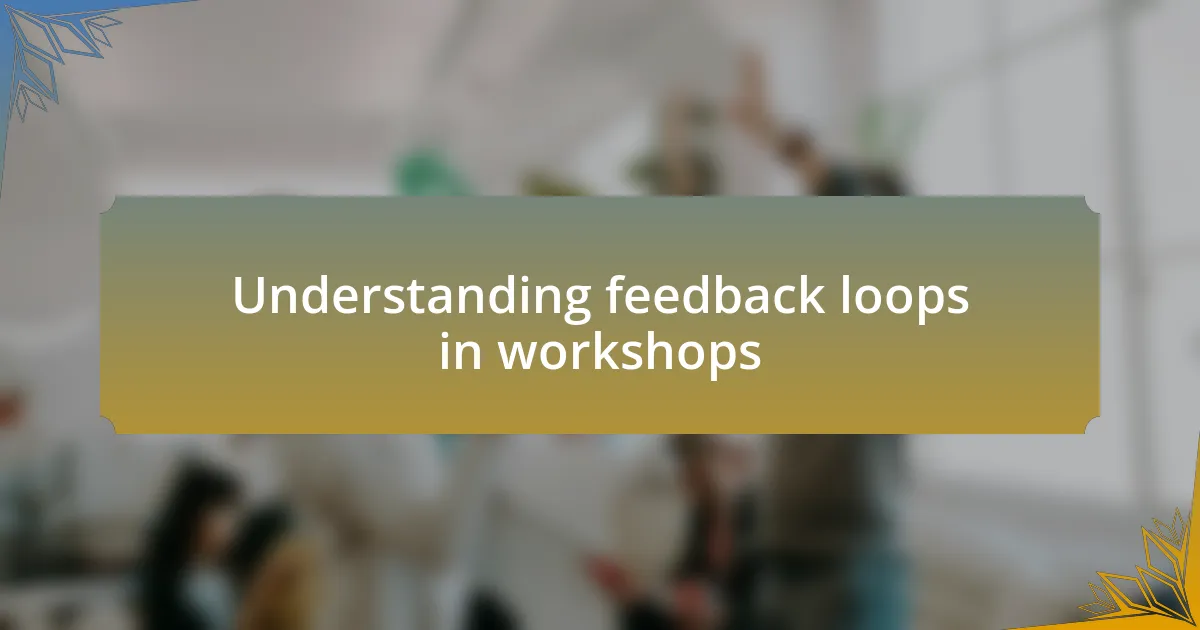
Understanding feedback loops in workshops
Feedback loops in workshops are essential for creating an engaging learning environment. I vividly remember a workshop where, after each activity, we gathered participants’ thoughts and feelings. The immediate responses not only shaped our next steps but also fostered a sense of community as attendees felt heard.
Have you ever noticed how a single piece of feedback can completely transform a session? In my experience, incorporating participants’ insights leads to innovations I hadn’t considered. It’s like unlocking a treasure chest of ideas that propel the workshop forward, making everyone feel like co-creators in the process.
Understanding these dynamics requires openness and vulnerability. I often encourage participants to share their reflections on both what worked and what didn’t. This honesty cultivates a safe space where we can collectively grow, learning from each iteration. Without these feedback loops, we risk stagnation, losing the spark that keeps the workshop experience alive and impactful.
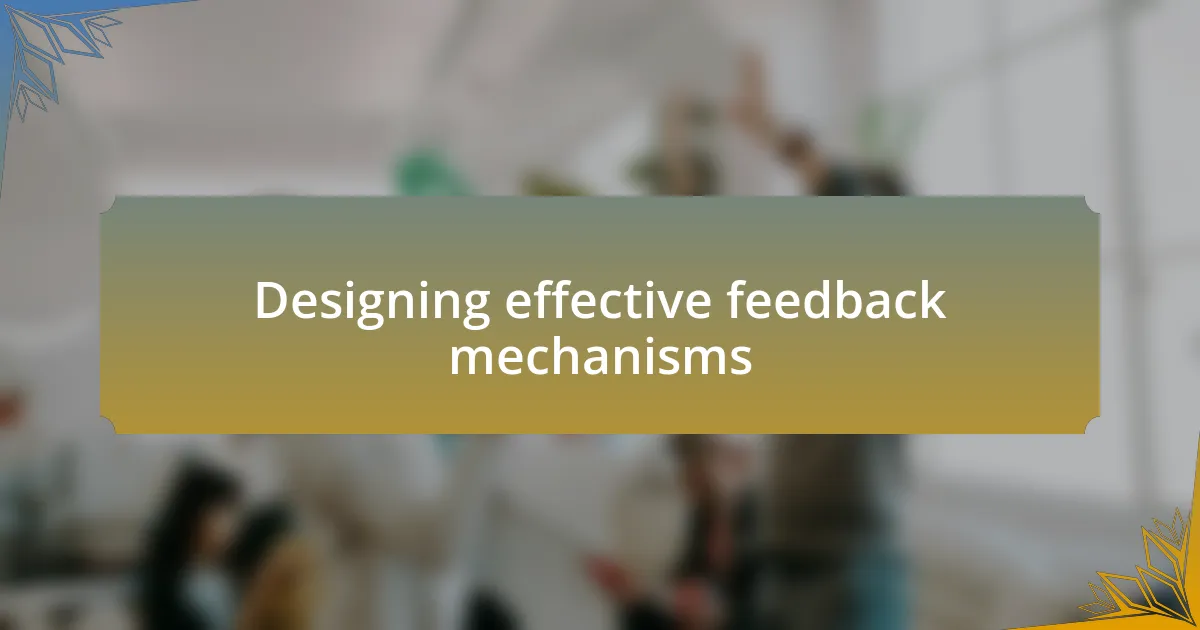
Designing effective feedback mechanisms
Designing effective feedback mechanisms requires intentionality and a clear structure. In one workshop, I implemented a simple yet powerful method: an anonymous feedback box. Participants could drop in their thoughts throughout the session. I was amazed at how honesty flourished when anonymity removed fear. It not only provided me with immediate insights but also encouraged participants to share comments they might have withheld in a more public forum.
Another approach I have found effective is the “three-minute reflection” at the end of each segment. I invite attendees to jot down their reactions and suggestions in a personal journal. This practice not only deepens their engagement but also gives them a tangible keepsake of their learning journey. Have you ever left a session feeling inspired but uncertain about what to do next? This reflective technique helps capture fleeting thoughts that can often be lost in the excitement.
Ultimately, cultivating a feedback-rich environment hinges on creating trust. I remember a particularly enlightening moment when a participant shared that she initially felt hesitant to voice her feedback. Yet, as we talked more openly about the importance of every voice, her contributions became a vital part of our dialogue. It’s a reminder that when people feel valued, they’re more likely to share their honest perspectives, enriching the entire experience for everyone involved.
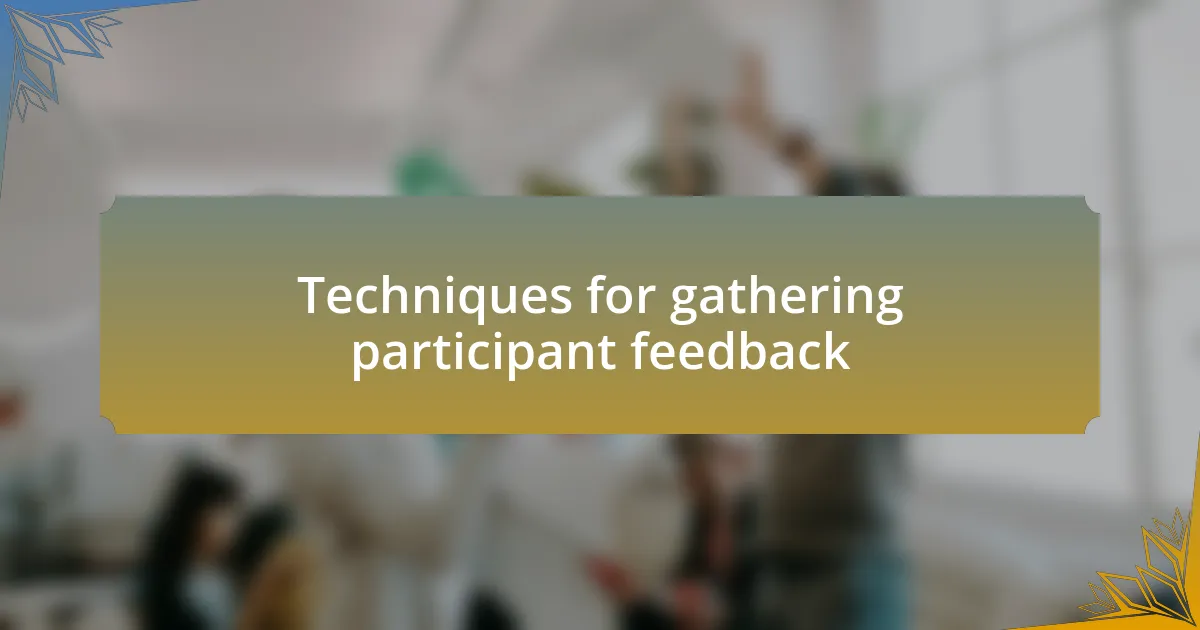
Techniques for gathering participant feedback
In my experience, using real-time polling during workshops has proven to be an excellent technique for gathering feedback. I once utilized a mobile polling app that allowed participants to rate their understanding of the material presented. The instant visual feedback not only helped me balance the pace of the session but also encouraged participants to voice their collective experience right then and there—how empowering is that?
Another technique I often employ is the post-session debriefing circle. I create a safe space where participants can openly discuss their thoughts and feelings after the workshop has ended. This informal setting often leads to deep conversations and unfiltered feedback. Have you ever participated in a debrief like this? It can reveal insights and emotions that are often left unexpressed in a more formal environment.
Lastly, I’ve found that follow-up surveys sent via email can be a goldmine for detailed feedback. After one workshop, I asked for specific insights about the content, delivery, and overall experience. The responses not only highlighted areas I needed to improve but also celebrated what resonated with the attendees. This approach not only fosters continuous improvement but also demonstrates to participants that their opinions are valued beyond the immediate moment.

Analyzing feedback for actionable insights
Analyzing feedback is where the magic truly happens. I recall a time when I sifted through post-workshop surveys and stumbled upon a recurring theme about the clarity of my explanations. It was eye-opening! This insight prompted me to restructure my materials, leading to a more cohesive experience in future sessions. Isn’t it fascinating how a simple comment can transform our approach?
As I dive into the feedback, I often categorize responses into themes, which provides clarity on what aspects resonate with participants. During one workshop, a participant’s suggestion about including more interactive elements stood out. When I decided to incorporate more group activities in subsequent sessions, the energy shifted dramatically. Have you ever noticed how changes based on feedback can uplift the entire atmosphere?
I’ve also learned to focus on both the positive and negative feedback. One workshop participant openly criticized a segment I felt confident about, but that critique pushed me to innovate. Isn’t it amazing how constructive criticism can lead to unexpected growth? Analyzing feedback helps me refine my delivery and foster a richer learning environment, ensuring participants leave feeling engaged and valued.
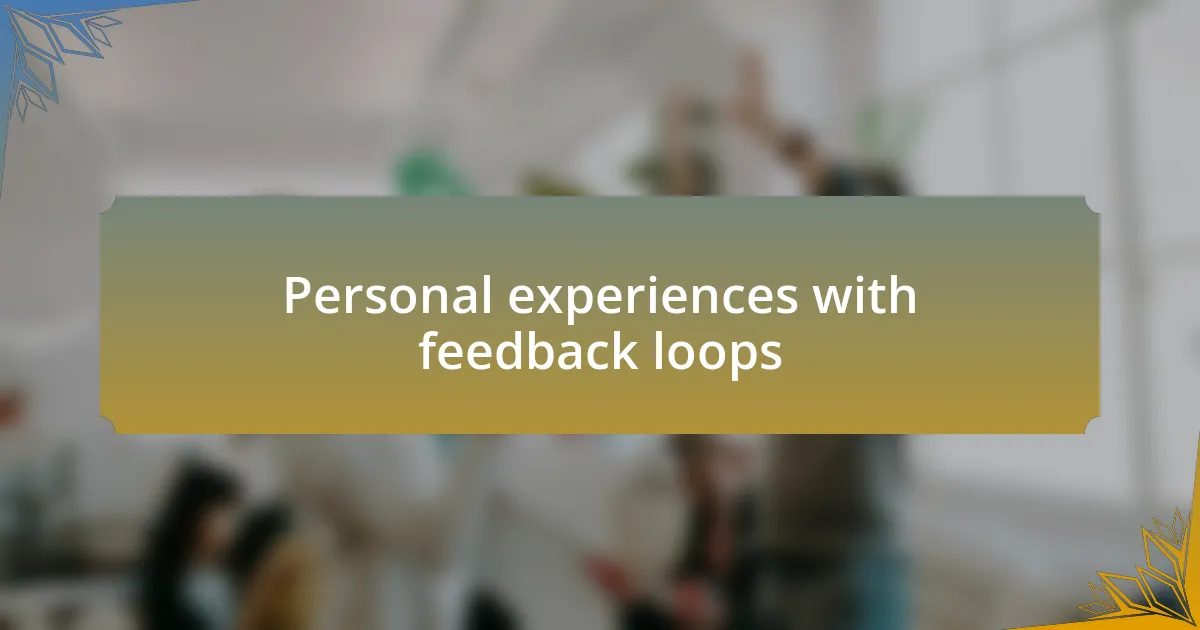
Personal experiences with feedback loops
In my workshops, I’ve experienced firsthand the power of closing the feedback loop. There was a session where I actively solicited suggestions during breaks. One participant shared their struggle with a particular concept, and I was able to address it right then and there. That real-time feedback created an immediate connection, transforming a potentially overlooked issue into a collective learning moment. It makes me wonder: how often do we miss opportunities to enhance understanding simply by not asking?
Sometimes, I’m surprised by the depth of emotional responses that feedback can elicit. I remember a workshop where a participant expressed that my session had restored their confidence in a skill they had long doubted. Their heartfelt words motivated me to examine the underlying elements that resonated so deeply. What is it about certain teachings that make such a lasting impact? I’ve come to realize that emotional connections are central to feedback loops, as they often reveal the true value of our efforts.
I also cherish the informal feedback I receive after workshops. One time, during a casual chat post-session, a participant told me how a specific story I shared inspired them to take action in their career. This kind of feedback often doesn’t make it onto formal surveys, but it holds immense value. Have you noticed how those spontaneous moments can sometimes be the most enlightening? They remind me that the journey doesn’t end with the workshop; it continues through the stories and actions that emerge from it.
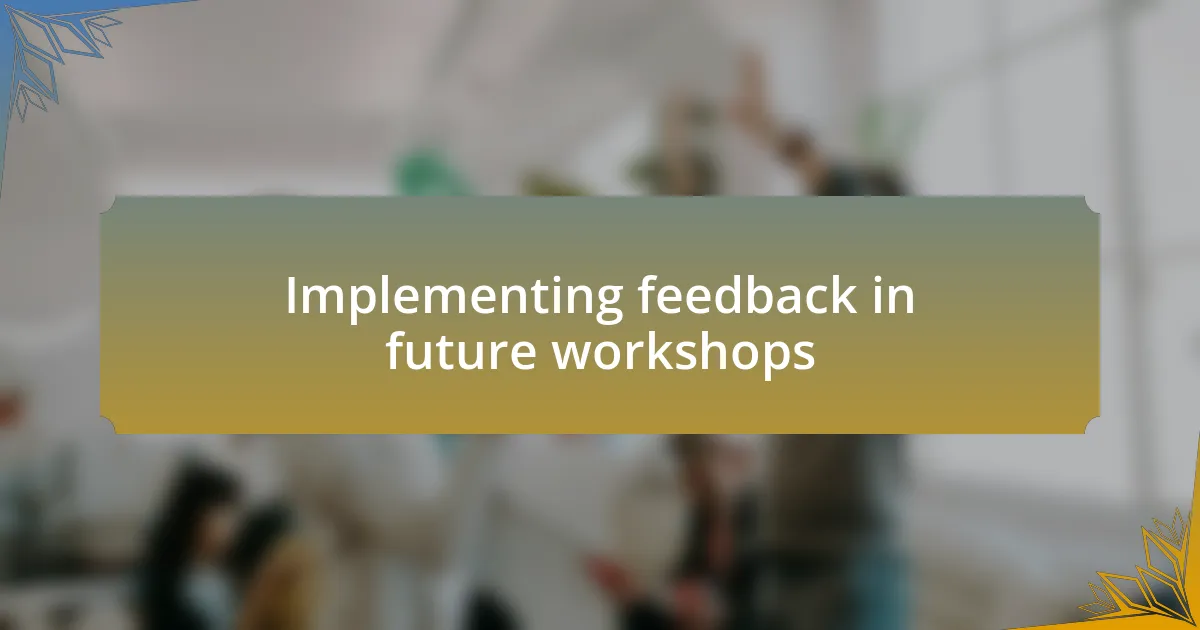
Implementing feedback in future workshops
I’ve found that implementing feedback effectively in future workshops feels like tuning a musical instrument. After a particularly engaging session on creative problem-solving, I gathered insights from attendees about what resonated with them. One participant noted that breaking out into smaller groups helped them engage more deeply. In response, I made it a priority to incorporate more breakout sessions in my next workshop. This shift not only enhanced participation but also enriched the conversations that followed.
A memorable moment came when I changed the format of my workshop based on previous feedback. I decided to try a more interactive approach, incorporating live polls during discussions. The excitement in the room was palpable as participants voted and shared thoughts in real-time. It made me realize: how often can a simple format change invigorate an entire group? The sense of inclusion and immediacy created a dynamic atmosphere, transforming the way I think about participant engagement.
Reflecting on these experiences reminds me of the importance of genuine communication. I often ask myself, how can I ensure that participants feel comfortable sharing their honest opinions? I find that creating a safe space upfront lays the groundwork for more candid feedback. As I prepare for my next workshop, this understanding guides my approach, ensuring that I not only invite feedback but actively encourage it at every stage of the process.